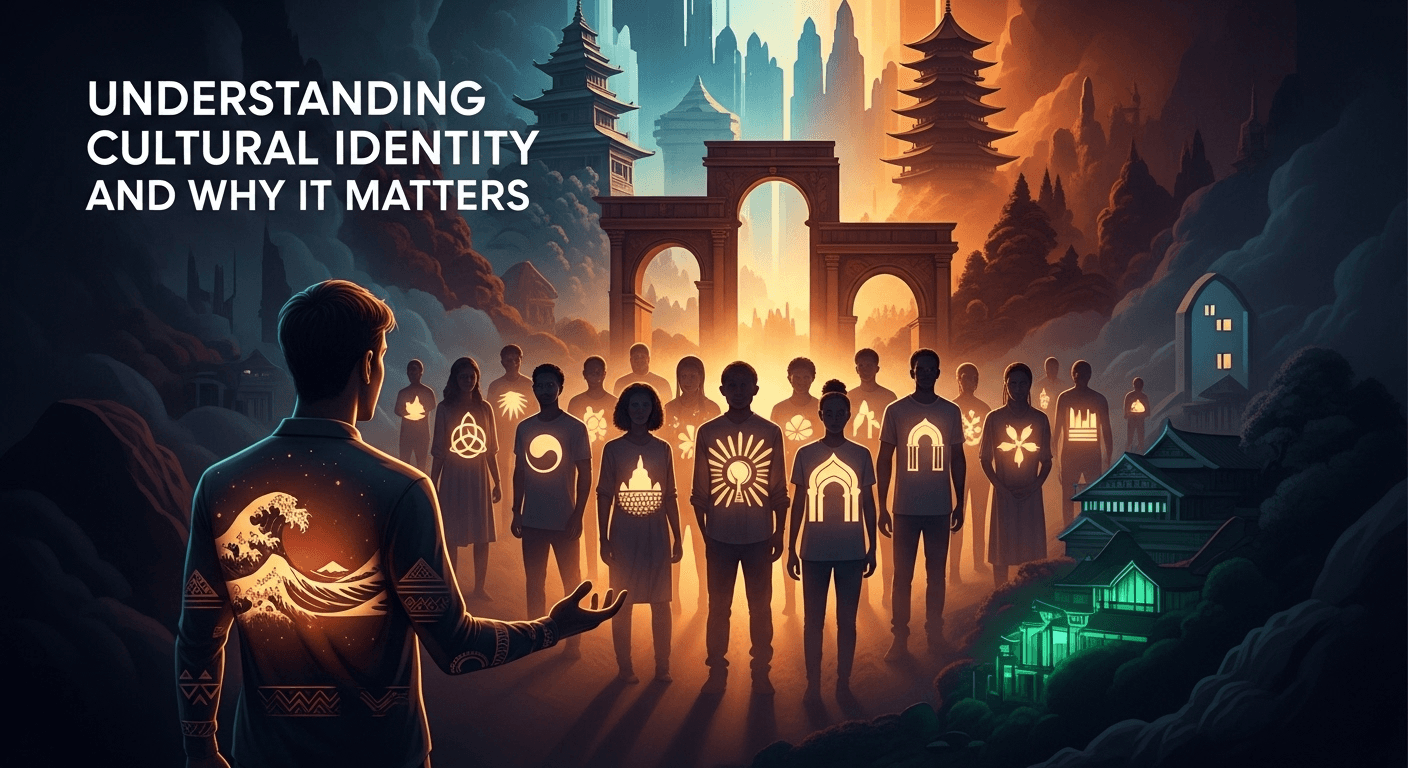We are all a tapestry woven from threads of memory, experience, and heritage. From the lullabies our parents sang to us to the food we share during holidays, these elements shape who we are and how we see the world. At the heart of this intricate personal fabric lies a profound concept that anchors us to our past and guides our future. But what is the meaning of cultural identity? In essence, it is the sense of belonging to a group, rooted in a shared system of symbols, values, beliefs, behaviors, and traditions. This identity is not merely about where your ancestors came from; it is a living, breathing part of your consciousness that influences your perspectives, shapes your interactions, and defines your place in the vast mosaic of humanity. Understanding the Core Components of Cultural Identity Cultural identity is not a single, monolithic entity. Instead, it's a composite of various interconnected elements that together create a unique cultural fingerprint for a group of people. These components are learned and shared, passed down through generations, and are constantly evolving. They serve as the building blocks that provide individuals with a framework for understanding the world, interacting with others, and finding a sense of belonging. Recognizing these components is the first step toward appreciating the complexity and richness of any culture, including our own. The most fundamental elements include language, which provides the very structure for thought and communication. It's followed by traditions and social norms, which dictate how people behave in everyday situations and during significant life events. Furthermore, shared history and artistic expressions like music, stories, and art create a collective memory and emotional connection among members of a group. Together, these components form a cohesive whole that is both deeply personal and universally human, acting as an anchor in an ever-changing world. Ultimately, these components are not static. As societies interact and technologies connect us in new ways, the elements of cultural identity can be adapted, reinterpreted, and blended. A person’s identity is therefore dynamic, shaped by both the heritage they inherit and the new experiences they encounter. Understanding this dynamic nature helps us move beyond simplistic labels and see culture as a vibrant, ongoing conversation between the past, present, and future. Language and Communication Styles Language is arguably the most crucial pillar of cultural identity. It is more than just a tool for communication; it is the very vessel that carries a culture’s history, worldview, and unique nuances. The words, grammar, and syntax of a language shape how its speakers perceive reality—a concept explored in the Sapir-Whorf hypothesis. For instance, some languages have multiple words for concepts like “snow” or “family,” reflecting the importance of these elements in their environment and social structure. Beyond formal language, dialects, slang, and non-verbal cues like gestures and personal space are also deeply ingrained in cultural communication, creating subtle but powerful bonds among insiders. When a language is lost, a significant part of that culture's identity is erased with it. Linguistic preservation is cultural preservation. Stories, poems, jokes, and ancestral knowledge that can only be fully expressed in their native tongue risk disappearing forever. That is why efforts to revitalize endangered languages are so critical. They are not just about saving words; they are about saving entire worlds of meaning, history, and identity that provide communities with a unique lens through which to view their existence and maintain a connection to their heritage. Traditions, Values, and Social Norms Traditions are the rituals and practices that mark the passage of time and celebrate a community’s shared beliefs. These can range from large-scale public festivals like Día de Muertos in Mexico or Holi in India to more intimate family rituals, such as specific recipes prepared for a holiday or the way a major life event like a birth or wedding is commemorated. These repeated, meaningful actions reinforce a sense of continuity and belonging, connecting individuals to both their ancestors and their contemporaries. They are the tangible expressions of a culture’s soul. Underpinning these traditions are a culture's core values and social norms. Values are the collective beliefs about what is considered good, right, and desirable (e.g., individualism vs. collectivism, respect for elders, the importance of hospitality). Social norms, in turn, are the unwritten rules of behavior derived from these values. They guide everything from how we greet one another and dress to how we conduct business and raise our children. While an outsider might find these norms arbitrary, for members of the culture, they provide a predictable and comfortable social environment. Arts, Cuisine, and Shared History The arts are a powerful medium through which cultural identity is expressed, celebrated, and questioned. Music, dance, literature, visual arts, and theater encapsulate a group’s aesthetic sensibilities, spiritual beliefs, and emotional landscape. A folk song can tell the story of a historical struggle, a traditional dance can embody a community’s relationship with nature, and a classic novel can explore the moral dilemmas central to a society. These artistic forms are not mere entertainment; they are archives of collective experience and emotion. Similarly, cuisine is a delicious and accessible entry point into a culture. The ingredients used, the methods of preparation, and the rituals surrounding meals reveal a great deal about a region's geography, history, and social structure. Food is often central to hospitality and celebration, acting as a powerful agent of social bonding. Finally, a shared history—comprising both triumphs and traumas—is a potent force that forges a collective identity. Remembering a nation's independence, mourning a shared tragedy, or celebrating historical figures creates a powerful "we-narrative" that binds people together across time. How Cultural Identity is Formed and Developed Cultural identity is not something we are born with; it is something we acquire through a lifelong process of socialization and personal experience. This development begins in infancy and continues throughout our lives, shaped by a multitude of influences. It is a dynamic journey, not a fixed destination. The early years are foundational, as family and immediate community





